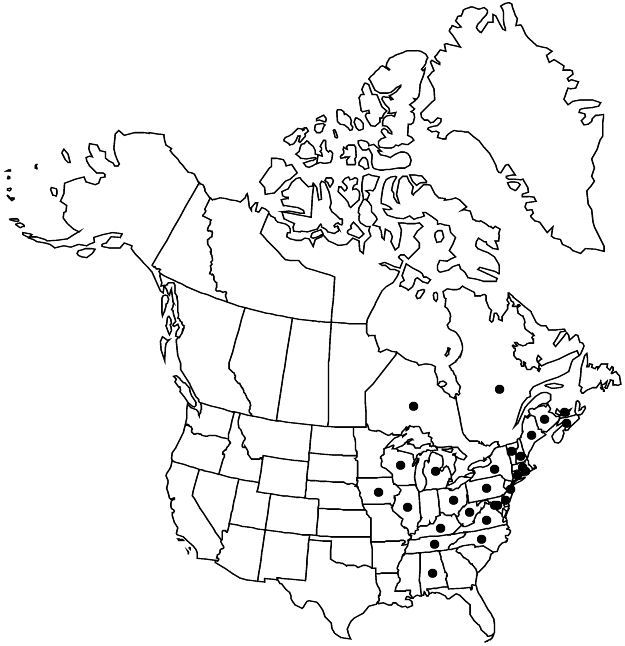Viola sagittata var. ovata
Fl. N. Amer. 1: 138. 1838.
Leaves: earliest blades ovate to widely ovate; mid-season blades ovate to elliptic, 1–8 × 1–4.5 cm, base truncate, attenuate, slightly sagittate or hastate, or ± cordate, margins crenate or serrate, ciliate, surfaces usually densely pubescent. Sepal margins ciliate. Cleistogamous flowers on prostrate to ascending peduncles. 2n = 54.
Phenology: Flowering Apr–Jun.
Habitat: Dry, open woods and thickets, disturbed ground, roadsides, powerline rights-of-way
Elevation: 10–1000 m
Distribution

N.B., N.S., Ont., P.E.I., Que., Ala., Conn., Del., D.C., Ill., Iowa, Ky., Maine, Md., Mass., Mich., N.H., N.J., N.Y., N.C., Ohio, Pa., R.I., Tenn., Vt., Va., W.Va., Wis.
Discussion
Variety ovata was known as Viola fimbriatula by those who considered it a distinct species. Torrey and Gray were the first to recognize its affinity with V. sagittata. The early leaf-blade structure is similar in var. ovata and var. sagittata and both have prominent sepal auricles on cleistogamous flowers (L. E. McKinney 1992).
Fernald described Viola fimbriatula forma umbelliflora, an apparently rare taxon from Halifax, Nova Scotia, in which flowers occur in umbels of three. H. J. Scoggan (1978–1979) included forma umbelliflora under Viola sagittata. Study is needed of this taxon because umbels are otherwise unknown in North American species of Viola. Several species in the Hawaiian Islands produce umbellate inflorescences with up to five flowers (W. L. Wagner et al. 1990).
Variety ovata reportedly hybridizes with V. sagittata var. sagittata (= V. ×abundans House).
Selected References
None.